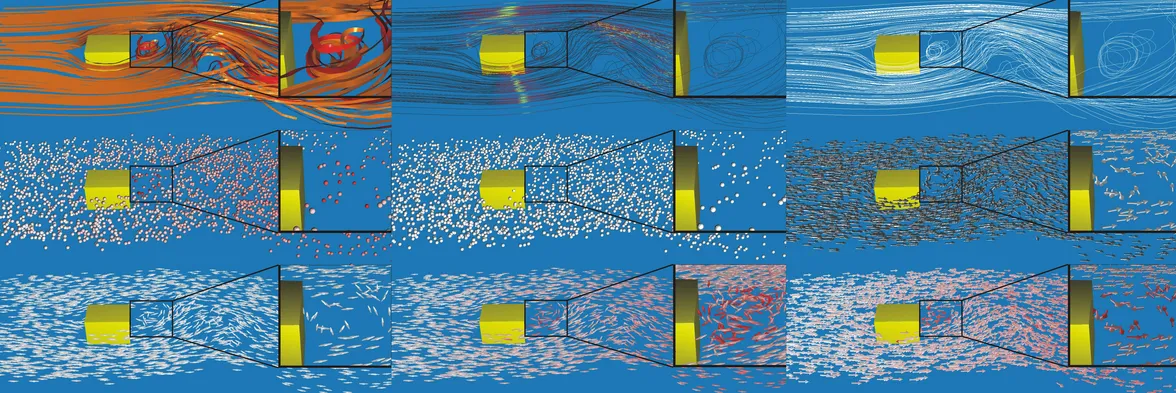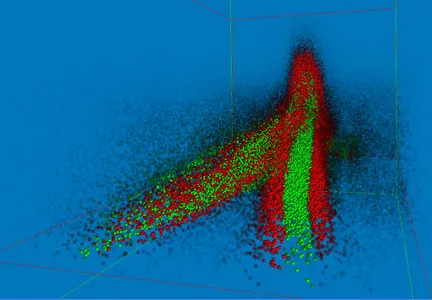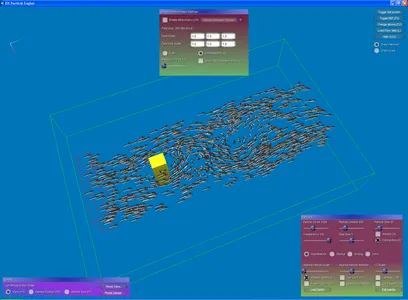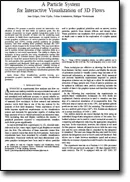A Particle System for Interactive Visualization of 3D Flows
Jens Krüger, Peter Kipfer, Polina Kondratieva, Rüdiger Westermann
Computer Graphics and Visualization Group,Technical University Munich, Germany

Background
We present a particle system for interactive visualization of steady 3D flow fields on uniform grids. For the amount of particles we target, particle integration needs to be accelerated and the transfer of these sets for rendering must be avoided. To fulfill these requirements, we exploit features of recent graphics accelerators to advect particles in the graphics processing unit (GPU), saving particle positions in graphics memory, and then sending these positions through the GPU again to obtain images in the frame buffer. This approach allows for interactive streaming and rendering of millions of particles, and it enables virtual exploration of high resolution fields in a way similar to real-world experiments. The ability to display the dynamics of large particle sets using visualization options like shaded points or oriented texture splats provides an effective means for visual flow analysis that is far beyond existing solutions. For each particle, flow quantities like vorticity magnitude and Lambda2 are computed and displayed. Built upon a previously published GPU implementation of a sorting network, visibility sorting of transparent particles is implemented. To provide additional visual cues, the GPU constructs and displays visualization geometry like particle lines and stream ribbons.
The images above show the screenshots from the proposed particle system. In the left image a collection of different visualization modes and modalities for a 3D Navier Stokes simulation is seen. The right image shows a screenshot of the engine with some of the UI controls enabled to give an idea of the "look and feel" of the proposed system. The logo on top of this page shows the flow transition in a boundary layer is visualized. Red(green) depicts lambda2 values less(greater) than zero. Transparency is fading out with increasing lambda2 magnitude. Using 250K particles, the particle probe can be positioned interactively at 30 fps. All images can be enlarged by clicking onto them.


